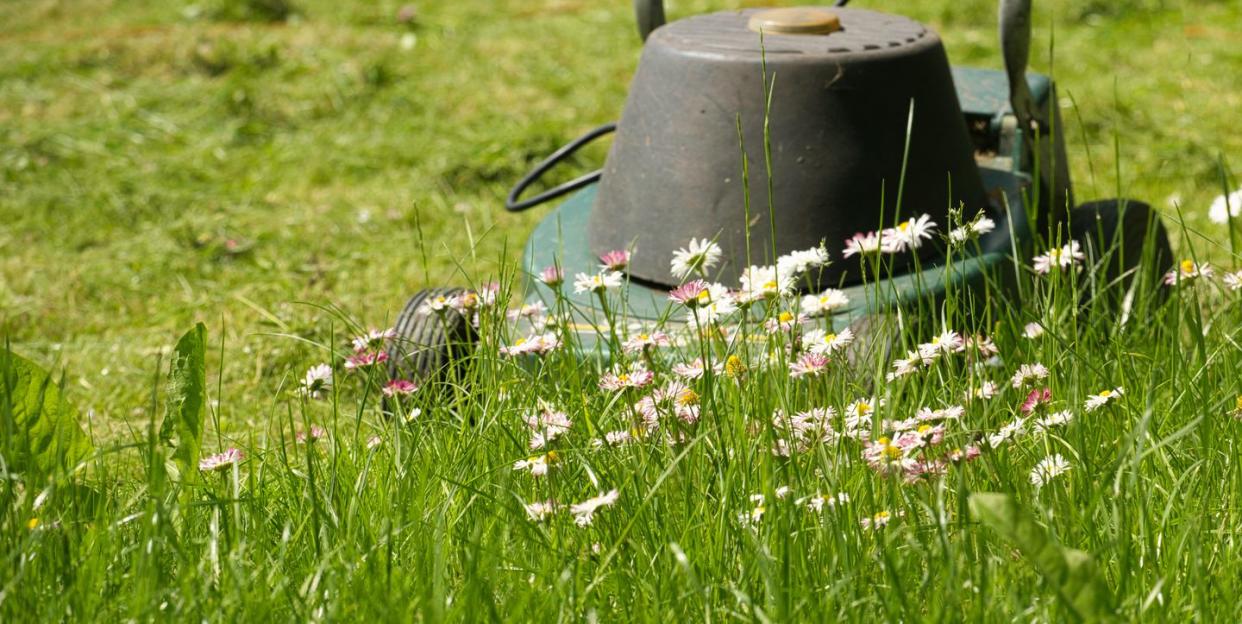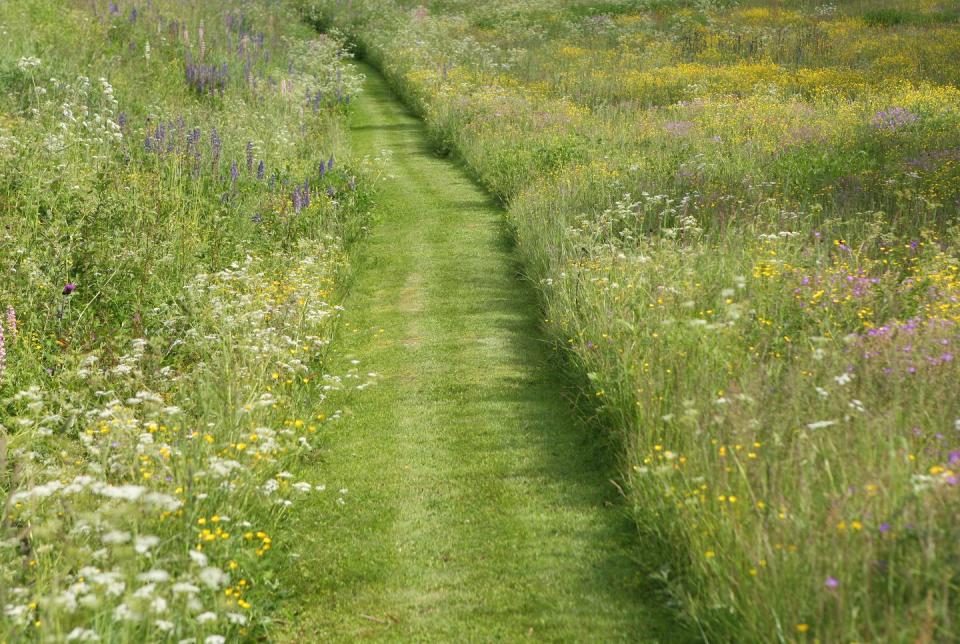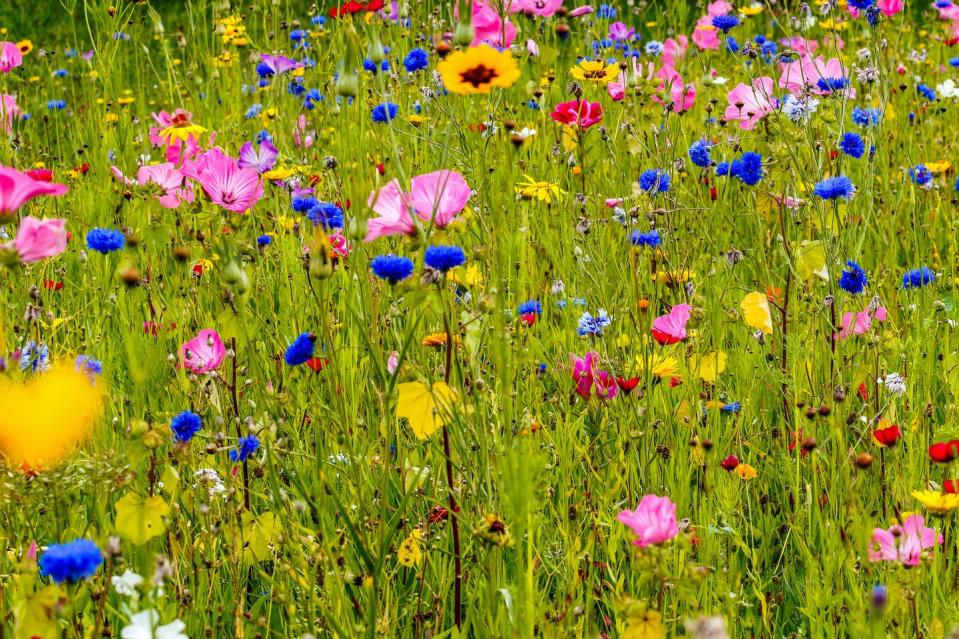No Mow May: Here's why you shouldn't mow your lawn this May

It might be tempting to cut the grass, but gardeners are being urged to put lawnmowers down this May and let bee-friendly wildflowers grow instead.
As part of Plantlife's annual No Mow May campaign, research found that simple changes in mowing can result in enough nectar for ten times more bees and other pollinators. In fact, their study discovered over 200 species were found flowering on lawns including rarities such as meadow saxifrage, knotted clover and eyebright.
The number of people not mowing is increasing, with research finding that 78.8% of 2,157 EFC participants in 2021 put the lawnmower down for a month before taking part in the survey — an increase from 33.6% in 2019.
To help wildlife thrive, the conservation charity is asking households to keep two lengths of grass, as well as leave some patches completely uncut. While most lawns should be given a monthly cut to boost short sword plants, there should also ideally be an area set aside for longer grass to thrive.
The benefits of not cutting the lawn include:
Dandelions will pop up, which provide important nectar for pollinators. According to Plantlife, just eight dandelion flowers produce enough nectar sugar to meet an adult bumblebee's baseline energy needs.
People who chose not to mow are rewarded with rare plants, including wild strawberry, wild garlic, adder’s-tongue fern and meadow saxifrage.
In 2021, 250 wild plant species were recorded by gardeners who took part in No Mow May.
Nectar is provided for insects. With 15 million gardens in Britain, our lawns have the potential to become major sources of nectar.
"The sheer quantity of flowers and nectar production on lawns mown once a month can be astonishing," Dr Trevor Dines, Plantlife's Botanical Specialist, explains. "We've discovered that plants like daisy, white clover and bird's-foot trefoil are superbly adapted to growing in shorter swords.
"These short-grass, 'mower-ducking' plants stay low down with stems well out of the way of the mower blades, but continually produce large numbers of flowers every few weeks. If these flowers are cut off by mowing, it just stimulates the plants to produce yet more flowers, boosting nectar production."

Oli Wilson, a modeller at the National Plant Monitoring Scheme, said: "May is a crucial month for flowering plants that need to get a firm foothold but we are not advocating never mowing after May.
"Plantlife guidance across the year recommends a layered approach to the garden cut, where shorter grass is complemented by areas of longer grass. This two-tone approach boosts floral diversity and nectar and pollen production through the year."
How can you get involved with No Mow May 2023?
Taking part in the campaign is simple, no matter the size of your garden. All you need to do is:
1. Leave your lawnmower in the shed for the whole month of May and let those flowers grow.
2. Don't forget to enter your counts on their website to give researchers a better picture of how many gardens and green spacers are part of No Mow May. Time to let your garden thrive...

How to get more wildflowers on your lawn
Make your lawn a haven for wildlife by welcoming wildflowers. Not sure how? Keep reading for everything you need to know, according to Plantlife...
1. Don't use herbicides or fertilisers as these both impact wild flowers. Avoid using moss killer as lawn moss can help wildflowers establish.
2. Allow plants time to set seed before cutting so they increase naturally. Gardening is all about patient and not rushing the process.
3. Introduce yellow rattle – known as "nature's lawnmower" – to long-grass areas as it reduces growth of grasses giving wildflowers more space to grow.
4. Introduce plug plants of suitable native perennial meadow flowers, preferably in the autumn.
5. Sow seeds of native perennial meadow flowers in patches of prepared soil in autumn. Remove the top few centimetres of turf from a small area, break up the soil a little with a fork and sprinkle the seed in the patch. Keep well watered if the soil is dry until established.
You Might Also Like

